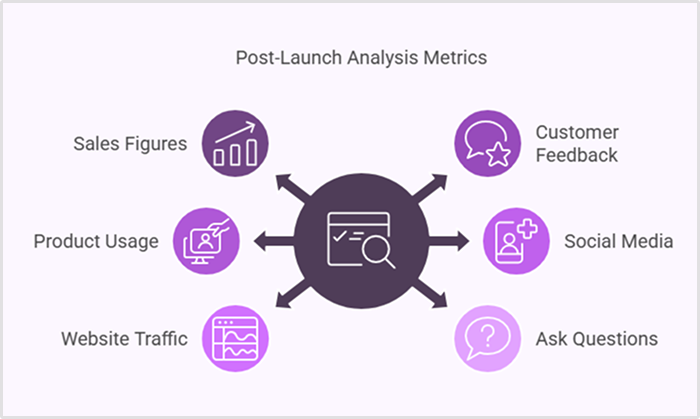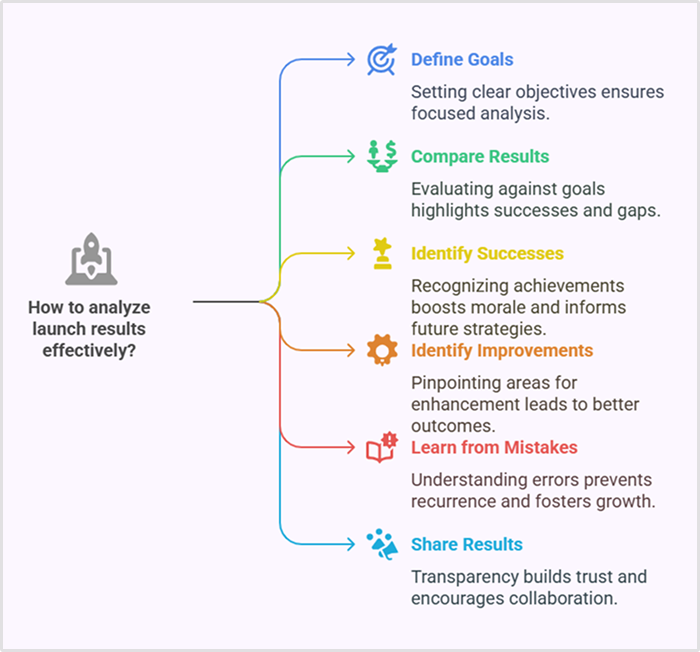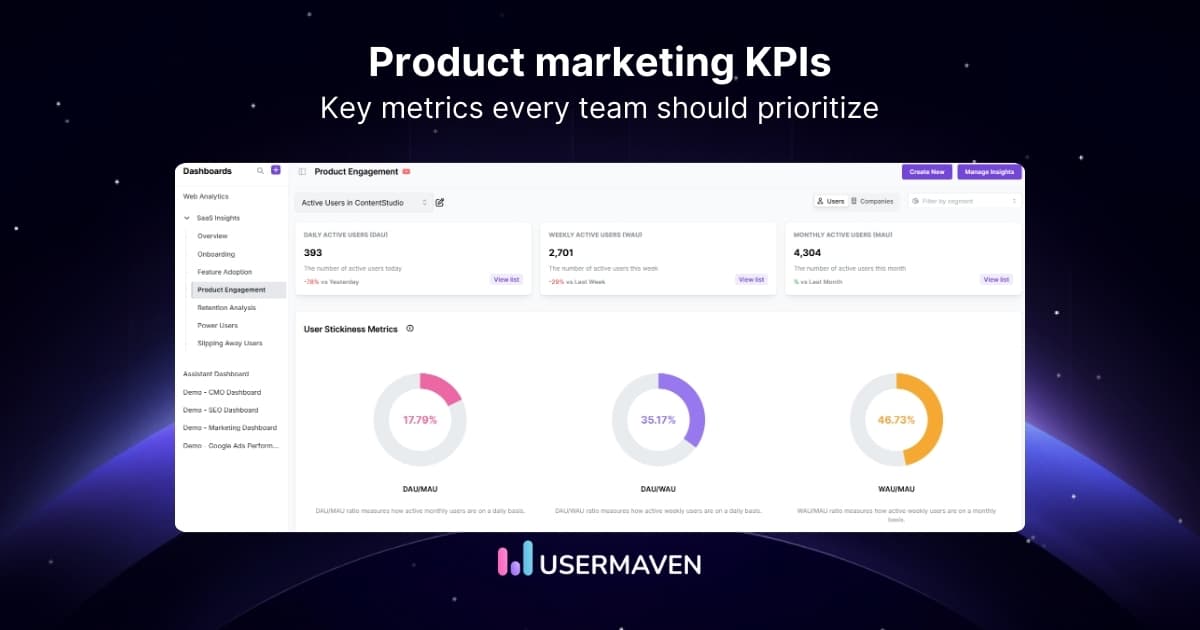Post launch analysis: What to do after you’ve launched
Sep 26, 2022
4 mins read
Written by Usermaven

After you’ve launched your product or service, it’s important to do a post launch analysis. This will help you determine what is working and what isn’t, so you can make necessary changes. Here’s what to do to ensure your success after launching your business.
Why post launch analysis is important
After you launch a product, it is important to do a post-launch analysis. This will help you to assess how successful the launch was and what you can do to improve things for future product launch plans.
It can be difficult to know what to look for when you do a post-launch analysis, but there are a few key things that you should keep in mind.
First, you need to look at your sales figures. This will give you a good idea of how well the product actually did.
You should also look at things like customer feedback and reviews. This will give you an idea of what people thought of the product and whether or not they would recommend it to others.
Finally, you need to look at your own performance. This includes things like how well you prepared for the launch and how well you executed it.
By looking at all of these factors, you can get a good idea of what went well and what you can improve upon for future product launch plans.
Overall, post-launch analysis is important because it can help you to improve your products and your launches. By taking the time to do this analysis, you can make sure that your future product launches are even more successful.
What to include in a post-launch analysis

After you’ve launched your product, it’s important that you review how it went. This way you’ll know if your marketing plan worked well and what can be improved for next time.
There are a few key things to include in your post-launch analysis:
- Sales figures
- Customer feedback
- Website traffic on landing pages
- Social media engagement
- Competitor analysis
Sales figures will give you a good idea of how your product performed overall.
Customer feedback will help you understand what people liked and didn’t like about your product offering.
Website traffic will tell you how many people visited your landing pages before and after the launch.
Social media user engagement will show you how much interest there was in your product on social media.
And finally, competitor analysis will give you an idea of how your product stack up against similar products on the market.
By including all of these elements in your post-launch analysis, you’ll get a well-rounded picture of how your product marketing performed and what you can do to improve for next time.
How to conduct a post-launch analysis

Success stories of your new product will help you identify what worked well with your target audience and what business metrics can be improved for next time.
There are a few key metrics you’ll want to look at:
1. Sales figures
- How many units did you sell?
- Did you meet your sales goals?
2. Customer feedback
- What did customers think of your product offering?
- Was there anything they didn’t like?
3. Product usage
- How is your target audience using your product?
- Are they using it as you intended?
4. Social media
- What’s the buzz on social media?
- Was your product messaging effective? Are people talking about your product?
5. Website traffic
- How much traffic did your website get during the launch?
6. Ask questions
- Was your product launch strategy successful? Why or why not?
- What went well in your marketing activities?
- What could have gone better?
- What did we learn?
- What changes should we make for future launches?
Answering these questions will help you fine-tune your launch process and make future launches even more successful.
Tips for conducting an effective post-launch analysis

After you’ve completed your launch, take some time to review a few case studies. This will help you identify what your user base liked and what they didn’t, so you can improve your market research and succeeding product launches.
Here are some tips for conducting an effective post-launch analysis.
1. Define your goals
What did your product launch strategy hope to achieve?
Were you trying to increase brand awareness, drive sales, or something else?
Make sure you know your goals before you start your analysis, so you can determine whether or not you met them.
2. Gather data
Collect data from a variety of sources, including social media, website analytics, and sales figures. This will give you a well-rounded picture of how your launch performed.
3. Analyze your data
Once you have all your data, it’s time to start analyzing it. Look for patterns and trends, and identify any areas where you can improve.
4. Share your findings
Once you’ve finished your analysis, share your findings with your product marketing teams. This will help everyone learn from your launch and make improvements for future launches.
By following these tips, you can conduct an effective post-launch analysis that will help you improve your future launches.
Best practices for 
Whether you succeeded or failed to launch a product, be sure to review the results to see how you can improve your product development and messaging strategy.
Here are some best practices for post-launch analysis.
1. Define your goals
What did you hope to achieve with your launch?
Be specific and measurable with your value proposition.
2. Compare your results to your goals
Did you reach the targets of your product launch plan?
Why or why not?
3. Identify what went well
Did your product marketing strategy work? What contributed to your success?
4. Identify what could be improved
What didn’t work well and what can be done differently next time?
5. Learn from your mistakes
What can you do differently next time to avoid the same mistakes?
6. Share your results
Share your post-launch analysis with your stakeholders to get their feedback and input.
By following these best practices, you can ensure that you’re getting the most out of your post-launch analysis and using it to improve your next launch.
Frequently asked questions
What comes after the launch phase?
The post-launch analysis phase is when you analyze how well your product or service did after it was launched. This includes looking at sales figures, customer feedback, and any other data you can collect. Based on this analysis, you can make changes to improve your product launches.
What is the post-launch of a product?
Post-launch of a product is the process of analyzing how the product performed after it was launched. This analysis can include looking at sales data, customer feedback, and other measures to determine whether the product was successful.
What is meant by post-launch analysis?
A post-launch analysis is a process of assessing how well a product launch strategy performed. This can involve collecting feedback from customers, analyzing sales data, and looking at other measures of success. The goal of a post-launch analysis is to identify areas that can be improved for future launches.
Conclusion
A post launch analysis is an important step in ensuring the success of your product or service. By looking at sales figures, customer feedback, and marketing materials, you can make the necessary changes to improve your results.
Try for free
Grow your business faster with:
- AI-powered analytics & attribution
- No-code event tracking
- Privacy-friendly setup


